Eagerly waiting for your tomatoes to ripen? Did you notice any small, water-filled area forming at the bottom of the juicy red tomato? The tiny small area has now widened and turned into a dark patch. On touching, it gives you a sunken and leathery feeling. Alas, the tomato is not bitten by a parasite. It is suffering from blossom end rot.
This is a common disease that hinders the growth of the plant. It occurs due to a deficiency of calcium. It’s a clear indication that this sad and unappetizing tomato is lacking calcium. Therefore, it is very important to know about the importance of calcium for tomatoes.
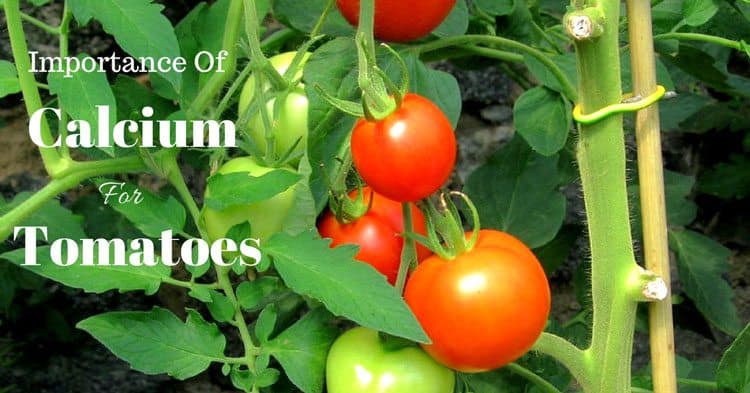
Read Next
- Deficiency Of Calcium For Tomatoes
- 8 Ways To Add Calcium For Tomatoes
- 1. Conduct A Soil Test
- 2. Add Ground Limestone
- 3. Add Gypsum
- 4. Use Of Fertilizers
- 5. Eggshells - A DIY Home Method
- 6. Using Calcium Spray
- 7. Ammonia-Based Fertilizers
- 8. The Role Of Water
- What happens When Calcium Is Added Too Early?
- What Happens When Calcium Is Added Late?
- 💬 Feedback
Deficiency Of Calcium For Tomatoes
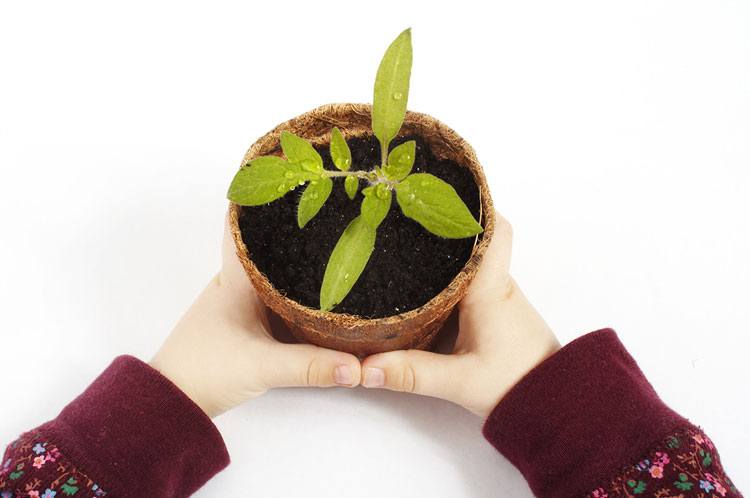


Calcium is an essential nutrient for tomato plants, and a deficiency can lead to several problems. Here are some signs and symptoms of calcium deficiency in tomato plants:
- Blossom end rot: Blossom end rot is a common problem in tomato plants with calcium deficiency. It appears as a dry, sunken area on the blossom end of the fruit, and can be black or brown in color.
- Leaf curling: Calcium deficiency can cause the leaves of tomato plants to curl, with the edges of the leaves turning upward and inward.
- Stunted growth: A lack of calcium can cause tomato plants to grow more slowly and produce smaller, weaker leaves.
- Brittle stems: Tomato plants with calcium deficiency may have brittle stems that are more prone to breaking.
- Poor fruit development: A lack of calcium can cause poor fruit development, with smaller, misshapen, or underdeveloped fruits.
To prevent calcium deficiency in tomato plants, it's important to provide them with the right amount of calcium throughout the growing season. You can do this by adding calcium-rich fertilizers or amendments to the soil, or by using foliar sprays that contain calcium.
It's also important to maintain proper soil pH levels, as low pH can limit the availability of calcium to the plant. By addressing calcium deficiency in tomato plants, you can encourage healthy growth, reduce the risk of diseases, and promote optimal fruit development.
8 Ways To Add Calcium For Tomatoes
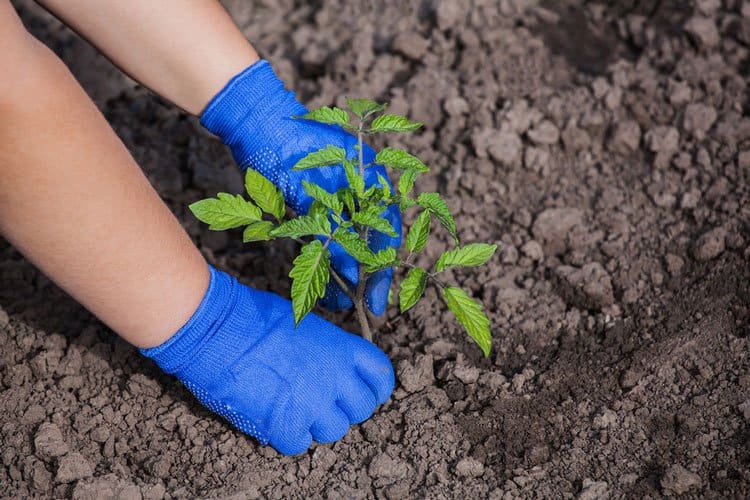


1. Conduct A Soil Test
A highly expert planter is mostly concerned about the presence of nutrients in the soil. The soil can be tested at home in order to determine the presence of macronutrients and soil acidity. The deficiency of calcium can be revealed by testing it in a laboratory. In extreme cases, you can get expert advice on how to add calcium to tomatoes.
Additionally, don't forget proper spacing when you plant tomatoes.
2. Add Ground Limestone
To aggravate the intensity of calcium in tomatoes, you can add limestone or increase the level of limestone in the soil. Spread calcite limestone all over the soil.
Next, prepare the soil manually by hand or machine. Before adding any fertilizer, it is suggested to add limestone and wait for at least a month.
Lime and gypsum work well here as both of these elements are coated with molasses, yet another good source of calcium.
3. Add Gypsum
It can be an excellent source of calcium on the ground that has inbuilt salt. Such non-alkaline soil is found only in farms that have been farmed for long years. Gypsum can have a lasting effect on soil. As gypsum can affect plants with its nutrients such as phosphorus, magnesium, copper, and zinc, it should be used in controlled amounts.
4. Use Of Fertilizers
Using fertilizers in a soluble form can be a good source of calcium for tomatoes. Other than this many commonly available fertilizers such as soft rock phosphate and bat guano is naturally rich in calcium. Fertilizers intended for tomatoes inclusive of calcium can be applied to the soil by tilling it.
Important note on improving calcium uptake of tomato plants: Be careful not to disturb the tomato plants’ roots. Give them only a one-time application of half a cup of 8-8-8 chemical granular fertilizer.
If using the organic granular fertilizer, then use only one cup of 5-5-5 per plant.
Mix the fertilizer with the top 8 inches of soil along with the lime, just before planting the tomatoes.
5. Eggshells - A DIY Home Method
Eggshells being rich in calcium can be added to the soil. Do not forget to grind eggshells before integrating them into the soil. Unlike limestone, it must break down into the soil before it is used by plants. Although this process might take a few months, it is simple and easy to do method to provide calcium for tomatoes.
6. Using Calcium Spray
Spraying calcium in the leaves of tomato plants is one of the best ways of adding calcium to tomatoes. The solution of the spray can be made by the planter itself. Simply add the selected calcium solution to one gallon of water.
Shower or drizzle the solution once in two weeks when the flowers are set to bloom. Make sure the sprayer reaches the fruit also. The fruit is the place where calcium is not poorly absorbed.
7. Ammonia-Based Fertilizers
Assuming that you’re a learned planter, you must be aware that fertilizers that are rich in ammonia can be harmful to the soil. It frequently absorbs calcium from the soil. In order to maintain an optimum level of calcium for tomatoes, the soil surrounding the tomato plants should be moist.
8. The Role Of Water
Water is the major source when we talk about adding calcium to tomato plants. One inch of water per week is required for the growth of juicy and calcium-rich tomatoes. It can be achieved from any natural such as rain or artificial process such as irrigation. Note that tomato plants must be deeply watered throughout or else shallow watering will not improve the situation.
Taking such preventive measures in relation to water ultimately promotes the growth of roots in the plant. Blossom end rot, the disease talked about here is often caused by a lack of calcium reaching the fruits in their developmental stage. Pot-grown tomatoes are more susceptible to catching the disease.
What happens When Calcium Is Added Too Early?
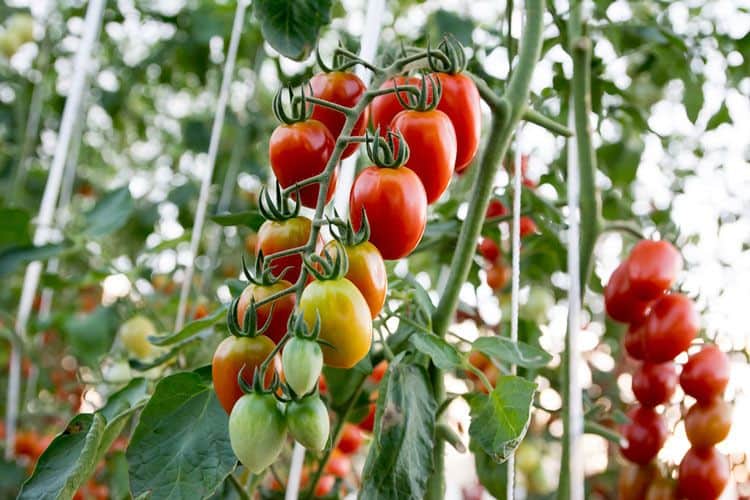


If the soil of your garden or farm has a Ph. level ranging from 6.5 to 7.2, it is said to be acidic soil. For such type of soil, it is suggested to supplement the soil with garden lime. Alternatively, add dolomite lime to enhance the level of magnesium in the soil.
There might be a chance that you have forgotten to add lime in the fall season. No need to worry, it can be added in the spring season at least two months before tomatoes are planted.
What Happens When Calcium Is Added Late?
Well, as you know every problem has a solution. So, if you could not add calcium to tomatoes either of the two seasons such as fall or spring. Here, you have to check the nature of the soil whether it is acidic or nonacidic.
The addition of lime might be the only solution you are left with. Acidic soil which hasn’t been limed for several years yearns for at least 2 cups of lime per plant. On the contrary, a ¾th cup of lime per plant would be sufficient enough.
Now, you are well acquainted with how to add calcium to tomato plants. In order to prevent the tomatoes from getting hit by the blossom rot disease, the timing of adding calcium for tomatoes is kept under close watch. Next, you as a planter must know the right time to add calcium in order to protect tomatoes from getting destroyed.



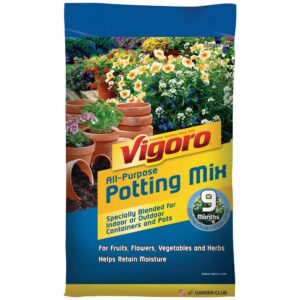

Comments
No Comments